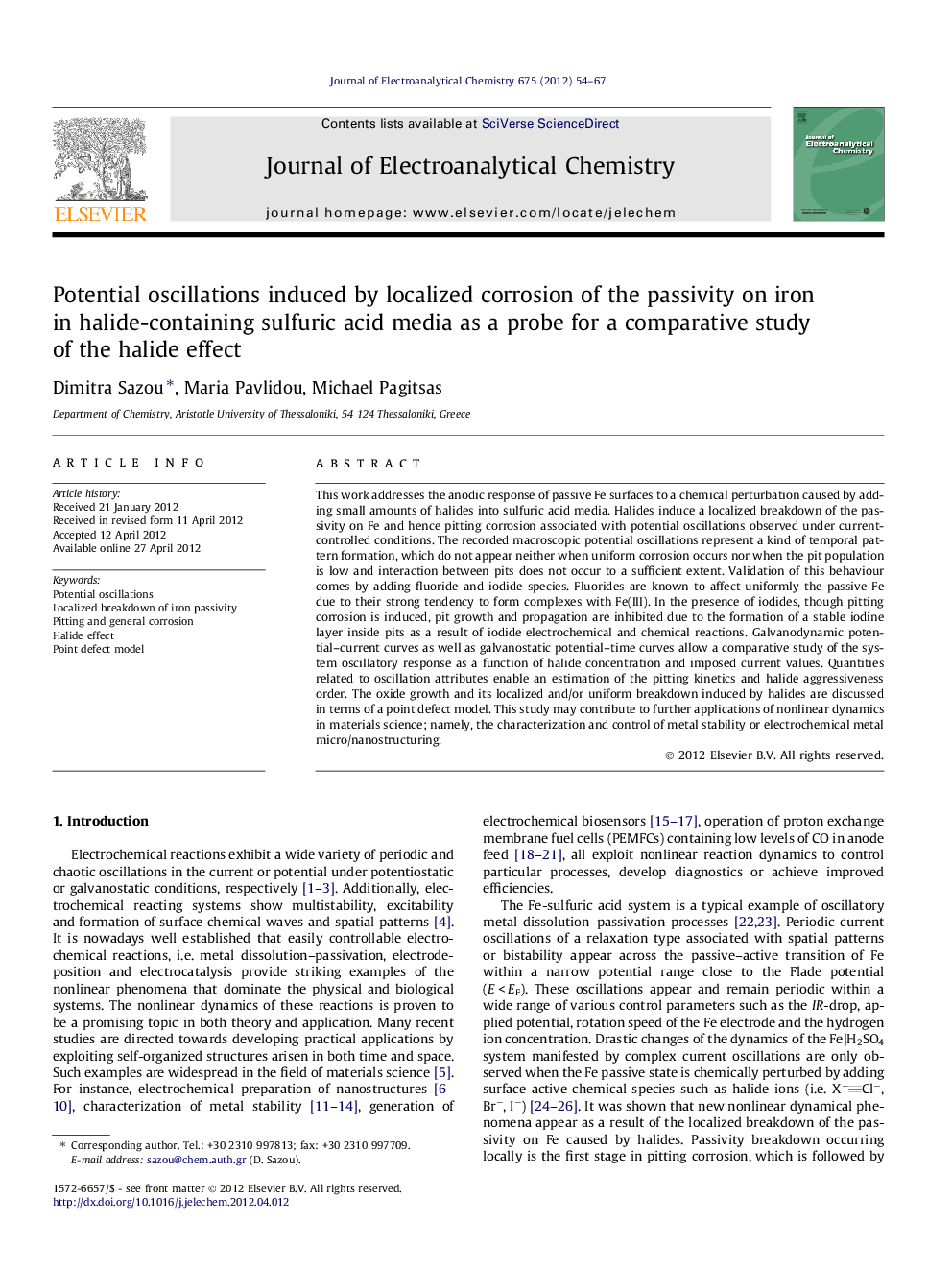| Article ID | Journal | Published Year | Pages | File Type |
|---|---|---|---|---|
| 219305 | Journal of Electroanalytical Chemistry | 2012 | 14 Pages |
This work addresses the anodic response of passive Fe surfaces to a chemical perturbation caused by adding small amounts of halides into sulfuric acid media. Halides induce a localized breakdown of the passivity on Fe and hence pitting corrosion associated with potential oscillations observed under current-controlled conditions. The recorded macroscopic potential oscillations represent a kind of temporal pattern formation, which do not appear neither when uniform corrosion occurs nor when the pit population is low and interaction between pits does not occur to a sufficient extent. Validation of this behaviour comes by adding fluoride and iodide species. Fluorides are known to affect uniformly the passive Fe due to their strong tendency to form complexes with Fe(III). In the presence of iodides, though pitting corrosion is induced, pit growth and propagation are inhibited due to the formation of a stable iodine layer inside pits as a result of iodide electrochemical and chemical reactions. Galvanodynamic potential–current curves as well as galvanostatic potential–time curves allow a comparative study of the system oscillatory response as a function of halide concentration and imposed current values. Quantities related to oscillation attributes enable an estimation of the pitting kinetics and halide aggressiveness order. The oxide growth and its localized and/or uniform breakdown induced by halides are discussed in terms of a point defect model. This study may contribute to further applications of nonlinear dynamics in materials science; namely, the characterization and control of metal stability or electrochemical metal micro/nanostructuring.
Graphical abstractFigure optionsDownload full-size imageDownload as PowerPoint slideHighlights► Adding Br− and Cl− on passive Fe induces galvanostatic potential oscillations. ► Potential oscillations characterize the pit initiation and halide effect on Fe. ► Oxide growth and its breakdown can be described in terms of a point defect model. ► Oscillation frequency and induction time for the oscillation onset were estimated. ► Features of potential oscillations reflect the kinetics of pitting corrosion.
